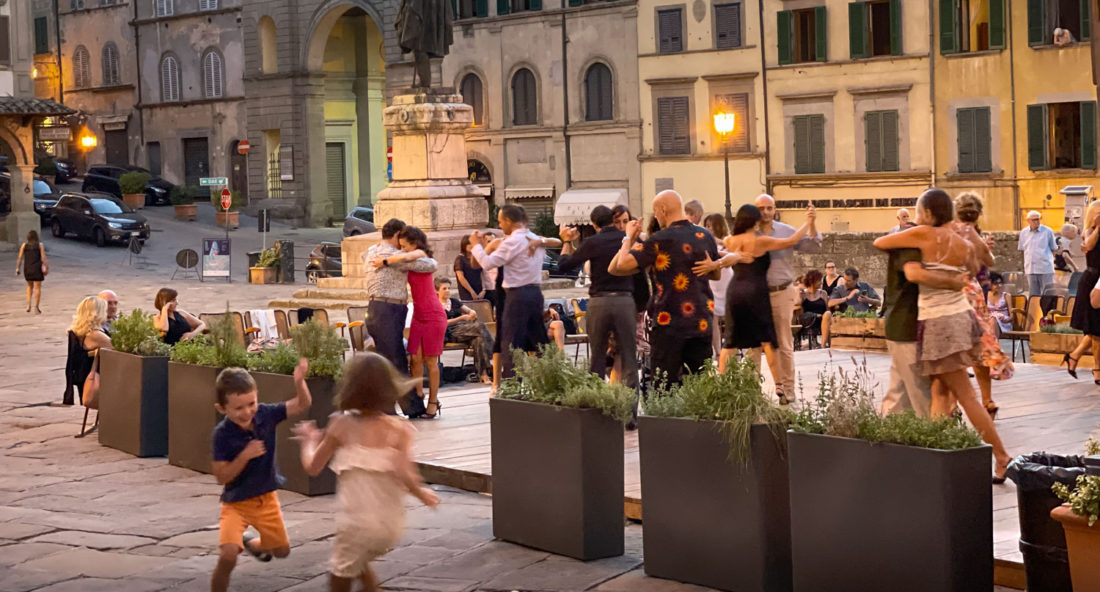
Tango, Italian style
“Would you like to come and watch my wife and me dance the tango?” asked Paolo, the dynamo of a contractor and stone mason who rebuilt our house and is now working on the restoration next door for our friends. He’s a whirling dervish of a man, curly grey hair, intense, sparkling eyes and always enthused about an arch he’s built or a particularly nice rock or bit of old beam he can reuse in a creative way. In addition to building walls that are art pieces and controlling a crane he and his wife are professional dancers on the Italian tango circuit. His invitation was several years ago and was our first exposure to Italian tango. We enthusiastically agreed that we’d love to come—it’s always fun to watch passionate, skilled dancers and hear vibrant, sensuous music. We closed our eyes, imagined Italians doing the tango, and couldn’t wait.
That evening they’d closed off one of the smaller streets in town and built a wooden stage. The DJ was readying the sound system to play the best of tango music and the dancers were assembling, all dressed in their finest.
Then the music and dancing started. It was about as different from our preconceptions of the tango as we could imagine. It was like taking the tango and instead of turning it to an eleven (you either get this reference, or you don’t), turning it to a two. Slow, stylized, formal, and to us, not in the ballpark of passion and rhythm of what we’d expected. Dancers barely touched, moving around the floor in predefined patterns. The music as well seemed like a pale interpretation. To say we were puzzled was an understatement but fortunately we ran into an Italian friend of ours who delights in knowing odd bits about his own culture, and he explained.
The years around 1890 to 1920 saw a large wave of Italians immigrants to Argentina (up to 60% of immigrants were Italian), mostly young men who came to make money, with many hoping to return to Italy. Buenos Aires became a melting pot with immigrants from all over the world living in close quarters. Into this stew pot the tango was born. Many credit the Italians as being a key influence in the creation of the Argentinian tango, along with mazurkas; milonga (the folk music of the Argentinean pampas which itself combined Indian rhythms with the music of early Spanish colonists); the habanera of Cuba and the candombe rhythms originating in Africa. A dash of traditional polkas and waltzes were thrown into the pot. Scholars say that Italian men were some of the first tango dancers and that they brought a particular note of wistful longing for the homeland that became a trademark of the tango.
The tango bounded around the world and became very popular around 1913-15 and at that time many Italians immigrants returned, eager to share this amazing music and dance with their villages. They tried to teach the music to local musicians and to show off this soulful, passionate dance at festas in the village square. But, apparently, they did not factor in Italian grandmothers, who were appalled and quickly put some decorum around this show of overt sensuality. No more touching than strictly necessary, lose the throbbing, passionate rhythm, make the music sound more familiar. And they would surround the dance floor to make sure all was to their liking. And the Italian tango was born.
Paolo and his wife were at a village event dancing last week and we filmed so that you can get an idea. He’s on vacation now for a couple of weeks and when I asked what they would be doing he quickly replied “Dancing”.






No Comments